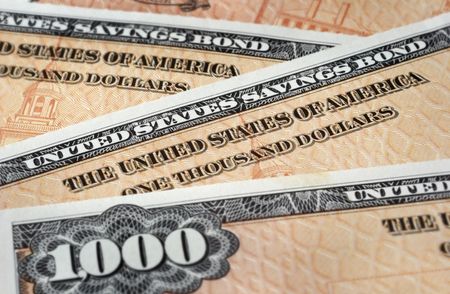Wild and Seriously Wacky ETFs
The latest exchange-traded funds track some exotic indexes.
The ever-expanding universe of exchange-traded funds is starting to look like an amusement-park fun house, filled with surprising -- and sometimes, scary -- sights behind every door. Consider an ETF that focuses on stocks that are popular among corporate insiders and are being upgraded by Wall Street analysts. Or one that invests in firms that hold promising patents.

These oddities are creations of Claymore Securities, a Chicago-area firm. With government approval of four new funds in mid December, Claymore has expanded its roster of ETFs to nine. But the firm isn't interested in traditional benchmarks, such as Standard & Poor's 500-stock index, that served as the focal points for early ETFs. Its ETFs are tied to obscure indexes whose stocks are picked on the basis of different investment strategies (ETFs are like index funds, but they trade on exchanges like stocks).
Claymore/BNY BRIC (symbol EEB) mimics a Bank of New York index that focuses on four hot emerging markets: Brazil, Russia, India and China. There's also Claymore/Zacks Sector Rotation (XRO), based on an index that shifts to emphasize hot sectors. Just approved, in addition to the patent ETF, is one that focuses on corporate spinoffs. It's difficult to decipher the funds' strategies because much of the selection criteria for the indexes is proprietary.

Sign up for Kiplinger’s Free E-Newsletters
Profit and prosper with the best of expert advice on investing, taxes, retirement, personal finance and more - straight to your e-mail.
Profit and prosper with the best of expert advice - straight to your e-mail.
Claymore's ETFs are sexy. "They're funky and appealing because they open up interesting strategies at a low cost," says Jim Wiandt, editor of the Journal of Indexes and publisher of IndexUniverse.com. Actually, the funds' annual expenses, which are capped at 0.60%, are high for ETFs.
Claymore says the returns of the indexes used in its ETFs are terrific. It makes that assertion based on back-testing, the art of examining how a strategy would have worked in the past. Still, prudence dictates against using the milk money to invest in these ETFs, because such narrowly focused funds are susceptible to the thrills and chills that you would expect to find in a fun house.
Get Kiplinger Today newsletter — free
Profit and prosper with the best of Kiplinger's advice on investing, taxes, retirement, personal finance and much more. Delivered daily. Enter your email in the box and click Sign Me Up.
-
 April RMD? Five Tax Strategies to Manage Your 2025 Income
April RMD? Five Tax Strategies to Manage Your 2025 IncomeTaxable Income The April 1, 2025, deadline for required minimum distributions (RMDs) is fast approaching for retirees who turned 73 in 2024.
By Kelley R. Taylor Last updated
-
 Rising AI Demand Stokes Undersea Investments
Rising AI Demand Stokes Undersea InvestmentsThe Kiplinger Letter As demand soars for AI, there’s a need to transport huge amounts of data across oceans. Tech giants have big plans for new submarine cables, including the longest ever.
By John Miley Published
-
 Best Banks for High-Net-Worth Clients 2024
Best Banks for High-Net-Worth Clients 2024wealth management These banks welcome customers who keep high balances in deposit and investment accounts, showering them with fee breaks and access to financial-planning services.
By Lisa Gerstner Last updated
-
 Stock Market Holidays in 2025: NYSE, NASDAQ and Wall Street Holidays
Stock Market Holidays in 2025: NYSE, NASDAQ and Wall Street HolidaysMarkets When are the stock market holidays? Here, we look at which days the NYSE, Nasdaq and bond markets are off in 2025.
By Kyle Woodley Last updated
-
 Stock Market Trading Hours: What Time Is the Stock Market Open Today?
Stock Market Trading Hours: What Time Is the Stock Market Open Today?Markets When does the market open? While the stock market does have regular hours, trading doesn't necessarily stop when the major exchanges close.
By Michael DeSenne Last updated
-
 Bogleheads Stay the Course
Bogleheads Stay the CourseBears and market volatility don’t scare these die-hard Vanguard investors.
By Kim Clark Published
-
 The Current I-Bond Rate Until May Is Mildly Attractive. Here's Why.
The Current I-Bond Rate Until May Is Mildly Attractive. Here's Why.Investing for Income The current I-bond rate is active until November 2024 and presents an attractive value, if not as attractive as in the recent past.
By David Muhlbaum Last updated
-
 What Are I-Bonds? Inflation Made Them Popular. What Now?
What Are I-Bonds? Inflation Made Them Popular. What Now?savings bonds Inflation has made Series I savings bonds, known as I-bonds, enormously popular with risk-averse investors. So how do they work?
By Lisa Gerstner Last updated
-
 This New Sustainable ETF’s Pitch? Give Back Profits.
This New Sustainable ETF’s Pitch? Give Back Profits.investing Newday’s ETF partners with UNICEF and other groups.
By Ellen Kennedy Published
-
 As the Market Falls, New Retirees Need a Plan
As the Market Falls, New Retirees Need a Planretirement If you’re in the early stages of your retirement, you’re likely in a rough spot watching your portfolio shrink. We have some strategies to make the best of things.
By David Rodeck Published